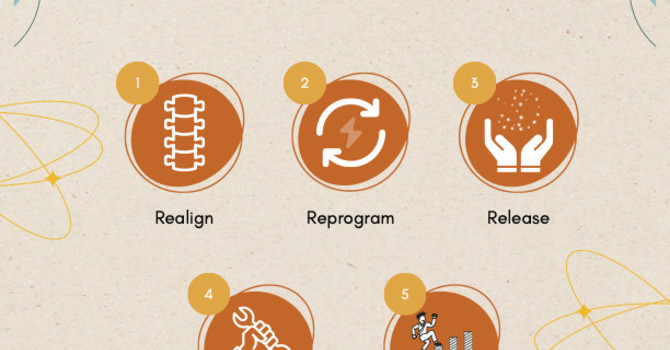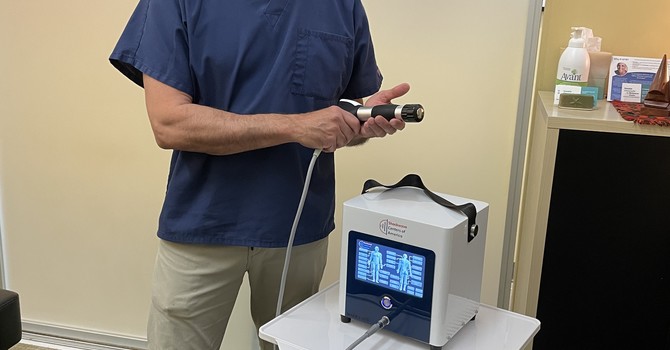
Common Misconceptions About Chiropractic Treatments
Chiropractic care is often misunderstood, leading to several misconceptions that can deter individuals from seeking the benefits of treatment. I have been in practice for 26 years and have heard many incorrect assumptions about the chiropractic profession.
In fact, I spent several years as a Post-Bacc Premed student in New York City, and a lot of time volunteering in different hospital settings, having informational meetings with Naturopaths and Acupuncturists and shadowing traditional Osteopaths and Chiropractors. The misinformation that I heard even from each profession regarding these other professions (including Allopathic Medicine) was astounding.
I chose to be a chiropractor, even after my acceptance to Osteopathic Medical school, because I saw the incredible benefits within this profession. And as a Doctor of Chiropractic, I am acutely aware of common misconceptions about chiropractors that people have. More specifically about patient's expectations of what to expect when they come in to see me, in the context of how I practice as a holistic, functional practitioner.
Here are some of the most prevalent myths about chiropractic:
1. Chiropractic Care is Only for Back Pain
One of the biggest misconceptions is that chiropractic care is solely for back pain. While it is effective for back pain, chiropractic treatment can also help with headaches, neck pain, joint issues, and even digestive disorders.
2. Chiropractors are Not Real Doctors
Chiropractors undergo extensive training and education, typically earning a Doctor of Chiropractic (DC) degree. They are licensed healthcare professionals who are trained to diagnose and treat various conditions, making them real doctors in their field. Did you know that chiropractic students have more class time than medical students?
3. Chiropractic Adjustments are Dangerous
Many people believe chiropractic adjustments are risky. However, when performed by a trained and licensed chiropractor, adjustments are generally safe. Most concern is around adjusting the neck. There are many different ways to do this, including low force instruments that don't involve that "crack" people find so exciting on TikTok videos.
Serious complications are rare, and chiropractors prioritize patient safety and comfort.
4. Once You Start Chiropractic Care, You Have to Go Forever
Some think that starting chiropractic care means a lifetime commitment. In reality, treatment plans are tailored to individual needs. Some patients may require regular visits, while others may only need occasional adjustments. I think of general maintenance like learning to eat well or exercise regularly. Would you avoid either solely because you wouln't want to maintain your progress?
5. Chiropractic Treatment is Painful
While some may experience discomfort after an adjustment, many patients report feeling immediate relief and improvement. Chiropractors use various techniques, and patients can discuss their comfort levels to tailor the approach.
6. Chiropractors Only Treat Musculoskeletal Issues
While chiropractors primarily focus on the musculoskeletal system, they also consider the overall health of the body. They may provide nutritional advice, exercise recommendations, and lifestyle counseling to promote holistic health.
7. Chiropractic Care is a Quick Fix
Many believe chiropractic care offers instant relief. While some patients may feel immediate improvements, long-term success often requires a comprehensive treatment plan and lifestyle changes. The general rule is the longer you've had dysfunction, the longer it takes for the body to heal. Correcting the alignment and releasing the muscle & fascial adhesions is like removing a thorn. This now allows the body to truly begin the healing process.
8. Chiropractors Only Use Manual Adjustments
Chiropractors employ various techniques, including soft tissue therapies, electrical stimulation, and therapeutic exercises. Manual adjustments are just one of the many tools in their toolkit. I utilize functional neurology (PDTR) and mind-body medicine (NET) as well as Shockwave Therapy in my treatments, along with structural adjustments and myofascial release (ART, Graston, Cupping).
9. Chiropractic Care is Not Evidence-Based
Research has shown that chiropractic care can be effective for various conditions, particularly for lower back pain and tension-type headaches. Evidence-based studies support the efficacy of chiropractic treatment. The reality is that the chiropractic profession does not have the finances that the allopathic profession (often via the pharmaceutical industry). However, all you need to do is search PubMed and you will find a plethera of clinical findings that support the chiropractic adjustment.
10. You Have to "Crack" Your Back to Be Adjusted
Not all chiropractic adjustments result in the audible "crack" sound. Chiropractors use different techniques, some of which do not involve joint manipulation at all. The sound is simply a result of gas bubbles being released in the joint capsule. A manual adjustment brings a synovial joint into its endrange peri-physiological range of motion, which creates this vacuum phenomenon creating a "pop" much like cracking your knuckles. Using an adjusting tool will not create such a sound, and the result is just as valid.
Conclusion
Understanding the realities of chiropractic care can empower individuals to consider it as a viable option for their health needs. By dispelling these myths, more people can benefit from the holistic approach that chiropractic treatment offers to overall health and wellness.






